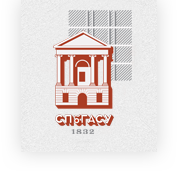Research on Influencing Factors of Craft Beer Brand Loyalty Based on the SOR Model
—Taking "Qu Yan" Craft Beer as an Example
DOI:
https://doi.org/10.63313/LHP.8014Keywords:
Craft Beer, Sor Model(Stimulus-Organism-Response Model), Value Co-Creation, Brand Image, Brand LoyaltyAbstract
With the rapid development of the craft beer market, the beer market is transforming toward niche and refined orientations, and consumer brand loyalty has become a key factor in brand competition. However, existing studies mostly focus on craft beer brand packaging and brewing techniques, with a lack of research on brand loyalty.Taking Macau's "Qu Yan" craft beer brand as a case study, this research, based on the value co-creation theory and the SOR model, explores the path through which value co-creation behaviors enhance brand loyalty via brand image cognition. Data were collected through consumer surveys and analyzed using the Structural Equation Model (SEM). The findings show that value co-creation behaviors, as an external stimulus, have a significant positive impact on consumers' perception of brand image, which in turn improves brand loyalty. Moreover, perceived value in brand image plays an important mediating role.In light of this, brand managers should construct value co-creation activities and enrich co-creation channels to strengthen consumers' brand loyalty.
References
[1] 汤子乐.(2022).内容营销视角下精酿啤酒品牌形象设计研究(硕士学位论文,江南大学).https://kns.cnki.net/KCMS/detail/detail.aspx?dbname=CMFD202301&filename=1022641819.nh
[2] Yi, Y., & Gong, T. (2013). Customer value co-creation behavior: Scale development and validation. Journal of Business research, 66(9), 1279-1284.
[3] 李朝辉,金永生 & 卜庆娟.(2014).顾客参与虚拟品牌社区价值共创对品牌资产影响研究——品牌体验的中介作用. 营销科学学报(04),109-124. doi:CNKI:SUN:YXKX.0.2014-04-011.
[4] 霍春辉,张银丹 & 王晓睿.(2019).虚拟品牌社区品牌共创类型对顾客价值的影响. 企业经济(11),93-99. doi:10.13529/j.cnki.enterprise.economy.2019.11.012.
[5] 张新圣 & 李先国.(2017).虚拟品牌社区特征对消费者价值共创意愿的影响——基于满意与信任中介模型的解释. 中国流通经济(07),70-82. doi:10.14089/j.cnki.cn11-3664/f.2017.07.009.
[6] 杨瑞.(2020).基于互动的顾客间价值共创维度构建——以虚拟品牌社群为例. 企业经济(03),50-58. doi:10.13529/j.cnki.enterprise.economy.2020.03.007.
[7] 李燕萍 & 李洋.(2020).价值共创情境下的众创空间动态能力——结构探索与量表开发. 经济管理(08),68-84. doi:10.19616/j.cnki.bmj.2020.08.005.
[8] 符加林,张依梦,闫艳玲,梁世昌 & 张洪.(2022).顾客契合与企业创新绩效:价值共创和创新氛围的作用. 科研管理(11),93-102. doi:10.19571/j.cnki.1000-2995.2022.11.010.
[9] BIEL A L. How Brand Image Drives Brand Equity[J]. Journal of Advertising Research. 1993, 6(11/12): 6-12.
[10] Aaker, J. (1991). The negative attraction effect? A study of the attraction effect under judgment and choice. Ad-vances in Consumer Research, 18(1).
[11] 卢泰宏,吴水龙,朱辉煌 & 何云.(2009).品牌理论里程碑探析. 外国经济与管理(01),32-42. doi:10.16538/j.cnki.fem.2009.01.005.
[12] Keller, K. L., Heckler, S. E., & Houston, M. J. (1998). The effects of brand name suggestiveness on advertising recall. Journal of marketing, 62(1), 48-57.
[13] Biel, A. L. (1992). How brand image drives brand equity. Journal of advertising research, 32(6), 6-12.
[14] 张红梅,龙嬿升,梁昌勇等.葡萄酒旅游目的地品牌形象影响因素扎根研究——以贺兰山东麓为例[J].中国软科学,2019(10):184-192.
[15] Copeland, T. E., Koller, T., & Murrin, J. (1991). Valuation: measuring and managing the value of companies.
[16] HOLBROOK, Morris B. The millennial consumer in the texts of our times: Experience and entertainment. Journal of Macromarketing, 2000, 20.2: 178-192.
[17] 丁夏齐,马谋超,王詠,樊春雷.(2004).品牌忠诚:概念、测量和相关因素. 心理科学进展(04),594-600. doi:CNKI:SUN:XLXD.0.2004-04-015.
[18] Arora, R. (1982). Validation of an SOR model for situation, enduring, and response components of involvement. Journal of Marketing Research, 19(4), 505-516.
Downloads
Published
Issue
Section
License
Copyright (c) 2025 by author(s) and Erytis Publishing Limited.

This work is licensed under a Creative Commons Attribution-ShareAlike 4.0 International License.















